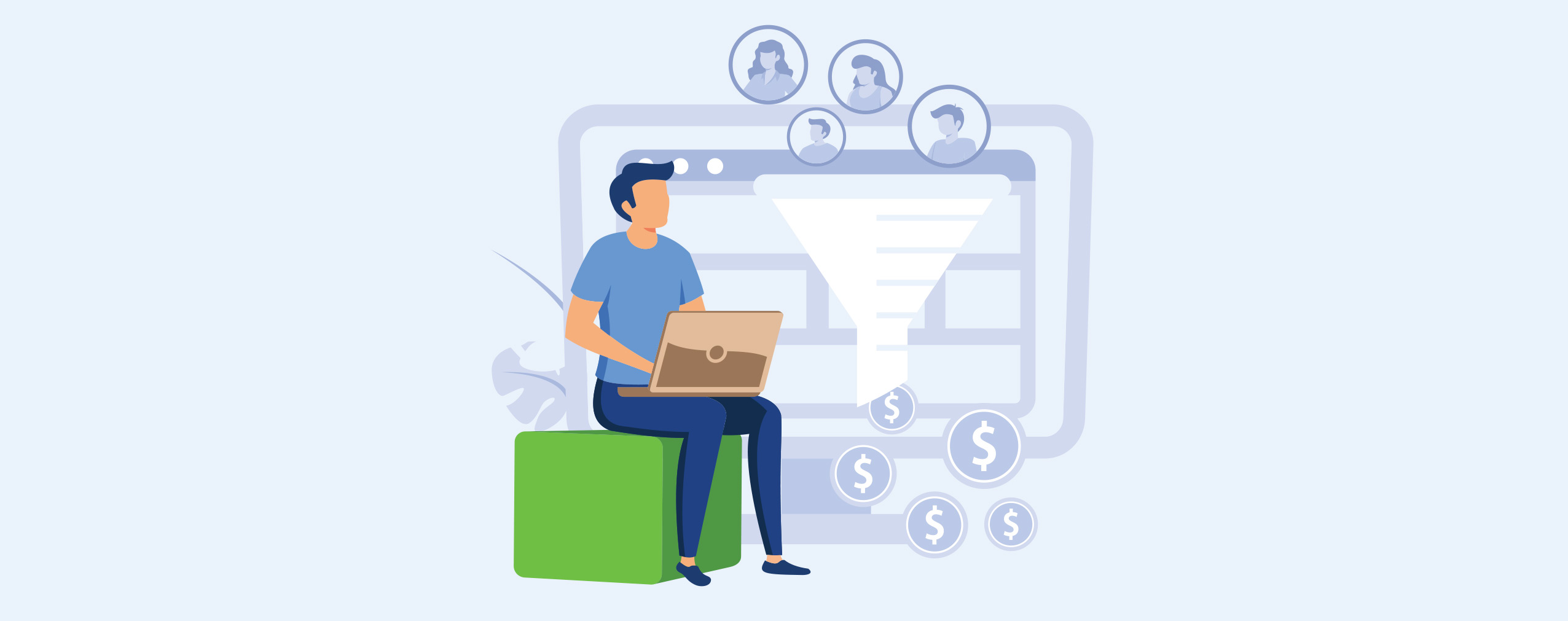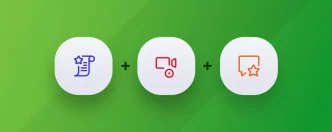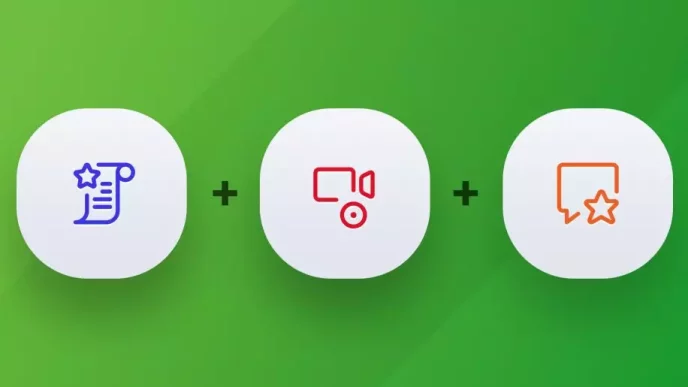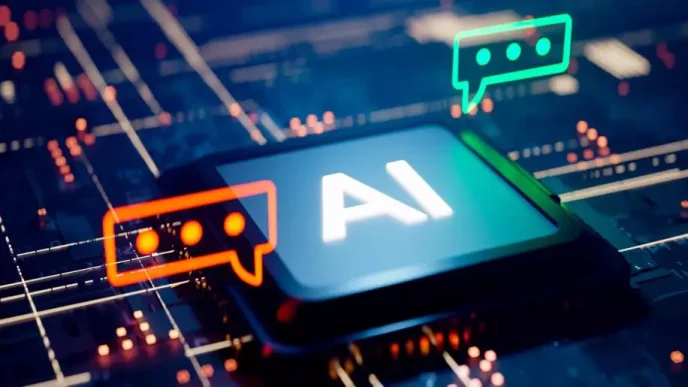Webinars are the mother of content marketing – these were the words spoken by Lukasz Kosuniak at one of the ClickMeeting events. It was several years ago, but these words still remain relevant today. In November 2023 we had the opportunity to look at webinars together as an extremely effective tool for generating leads.
How to prepare them well?
How to host a webinar in order to make it actually effective in this regard?
Where to meet the leads after the event?
Lukasz Kosuniak – a book author, webinar host and B2B marketing practitioner with 20 years of experience – answered these and many other questions.
Table of Contents
Why do webinars generate leads?
When preparing a webinar, it is useful to know what its purpose is and who you are targeting with the content. Not every webinar is designed to generate leads – sometimes our goal will be to expand our mailing base. It’s worth establishing this at the very beginning to avoid disappointment. Correct assumptions will allow you to design the entire event.
How do webinars generate leads?
1. Concentrated knowledge
Content-wise, a webinar is very useful in generating leads because it concentrates knowledge. What often happens is that customers receive printed materials or some links from a vendor and don’t have time to read them. On the other hand, if you manage to invite the right people to the webinar, the content given there is in such a condensed way that it speeds up the decision-making process.
2. Lead classification
The length and topic of the webinar helps us filter the leads. For example, giving the webinar topic “How to convince the board of directors to automate marketing,” we know that people will show up that are already interested in the topic, want to implement it, but see an obstacle in the form of decision-makers. However, people who are just beginning to take an interest in the topic will not show up.
3. Expertise
Especially in B2B sales and marketing, the sales person is a key figure. By supporting them and preparing them to participate in the webinar, we make them recognizable. Salespeople themselves who participate in webinars admit that the comfort of their work increases, but also the effectiveness is higher. This is because the customer already recognizes the person and values the knowledge that is shared during webinars. They are more likely to pick up the phone or respond to an email later.
4. Interactions
A webinar, as a tool that has many interaction features, allows you to lead leads: not only generate them, but also direct them accordingly.
Lukasz Kosuniak presented the results of his research here. For example, he asked webinar organizers how they evaluate their effectiveness. As you can see, those who have decided to use this form of outreach rate it high or very high in most cases.
Among the benefits of webinars, the following are mentioned in turn:
- Building an expert brand.
- Acquiring new contacts.
- Content that we can then use again and again.
- Generating leads.
- Increasing customer loyalty.
By investing in building an expert brand of sales representatives, we impact lead generation. This is because there is a very large element of risk in B2B purchasing and business decisions that customers seek to avoid. Therefore, if someone is seen as an expert in a particular field, they are also seen as a safe choice.
Types of webinars
When organizing webinars, it is worth answering the question: why are we doing it. Not every webinar is organized to collect leads, and this awareness is important to avoid disappointment.
Lukasz Kosuniak divided webinars into three types:
- Educational – there is a wide selection of topics. This type of event is not aimed at generating leads, but at building a valuable mailing base. These are mass webinars, but without the expectation that those attending the webinar will decide to make a purchase.
- Addressing objections – this kind of webinar sifts out people who are not interested in the product, i.e. there are fewer attendees, but they are more deeply interested in the topic. These can be objections like “I would like to, but I don’t know how to convince the board”, “I am interested, but someone doesn’t want to agree”. A well-conducted webinar of this type is a 12-15% increase in lead generation.
- Presenting a solution – here the group of interested parties will be even smaller, but the effectiveness of lead generation will be definitely higher.
The presenter encourages to repeat webinars if we have a good topic, and not to use only the recording. Each webinar is an opportunity for live interaction.
How to prepare a webinar well?
The key is to prepare the webinar properly. Its structure should be clear. Throughout, it’s also a good idea to summarize the successive parts of the webinar – this increases attendee involvement and provides an opportunity to introduce elements of interaction. Summarizing successive stages, we can introduce, for example, a survey.
Another benefit of a good structure and summarizing successive parts is the ease with which we can use the material in content recycling. We have a clear division into parts that we can use later.
Lukasz Kosuniak stated:
When preparing questions for webinar attendees, you should also prepare and anticipate the answers. So that it is clear that something comes out of them. For example, when asking what kind of companies they are from, in the next stages you can divide the information into those about representatives of small companies and those about large corporations.
To get them to attend, they need to know where and when – that is, promoting the webinar
To increase attendance, you need to take care of the promotion of the webinar. And here the promotion of the presenter is extremely important. After all, a webinar is a meeting with a specific person. Recording a short invitation to the event can help with promotion. You can also use a recording of a previous webinar or slides and a short talk about what will be presented at the webinar.
As the author of the book “Marketing automation step by step” points out:
I recommend promoting the webinar three to two weeks before the event.
Conducting a webinar – what should you keep in mind?
Lukasz Kosuniak pays special attention to all the elements that can bring a lot of stress during the event – from unloaded equipment, malfunctioning headphones or incorrect call to action settings.
In addition to the checkpoints, you also need to do your homework.
When thinking about generating leads during a webinar, you should:
Set a goal, such as:
- arranging consultations
- selling a course
- to start testing a product.
Prepare the process:
- CTA button
- LP pages
- confirmations
Prepare salespeople:
- meeting calendar
- call script
- follow up
- lead tagging.
If you already have a lead generation scheme in place, remember the CTA during the webinar.
As Lukasz Kosuniak admits:
One of the reasons I use ClickMeeting tools is that there is a CTA tool here. An active button that I can trigger and that attendees will find it easy to click on.
Many webinar producers don’t have such a tool and the link is sent via chat, for example. It only takes three people to write back and the link disappears into the content of the communication. And this is the worst moment for the disappearance of the link to the consultation, because right now we wanted to generate a lead.
It is also important to warn interested people what the consultation we are inviting them to will look like.
This is a simplified scheme of the campaign. The initial stage is to educate, for example, through a blog article or a video on LinkedIn.
The next step is to build trust, such as a webinar discussing methods of raising funds for innovation. At the end of the webinar, the salesman recommends that you choose one of the methods and invites you to a short individual consultation to help you make a decision.
In doing so, he presents a checklist that will be discussed during the consultation. This is the substantive part.
Lukasz Kosuniak presented how to prepare a CTA button on the ClickMeeting platform step by step and include it in the process:
The CTA button, for example, a link to a meeting, is visible throughout the entire webinar or at a time interval selected by the presenter. When clicked, the attendee is taken to the calendar view and bookable for an interview date.
In webinars, the technical part is very important.
Where are the leads? – i.e., what happens after the webinar
Your event has ended? Great, but what’s next? Lukasz Kosuniak shared a checklist of what to do after the webinar:
- We collect feedback in the form of a survey after the webinar. Here we can ask about topics that attendees would be interested in in the future.
- We design a material reformat, or repurposing, that extends the life cycle of the webinar. For example, if we didn’t have time to answer all the questions, we can publish them later in the form of an email to attendees or on LinkedIn or Facebook. In each of these materials, we provide an option to schedule a consultation.
- We download the recording, we can divide it into parts.
- We download the participation report.
There is a very cool report in ClickMeeting. We can download it both in Excel and in PDF, so we can see how many attendees there were and how long they stayed with us.
We make the recording of the webinar available. We can also split it into parts and send it to attendees with subsequent emails.
For me, the webinar is also a very effective tool for creating other content. It also makes the webinar “live” later on.
Remember that a webinar is not a lonely island. It is not disconnected from other activities. We have several or even a dozen content formats that we can use based on the recorded webinar and thus maintain thematic consistency. By doing so, we deliver ourselves first to those early leads and then to more educated ones.
Webinars are effective in transferring knowledge. It is not always the professionals in an organization who are interested in writing articles, for example. If we have good specialists who can make a presentation and we prepare them to conduct webinars, we can even create several blog posts from this material. A condensed way of giving knowledge is also important for attendees.
Webinars can be very engaging. And importantly, if we offer attendees interaction during the webinar, there is a greater chance that they will click on the CTA button. According to Lukasz Kosuniak, this is because during a webinar without attendee interaction, attendees enter “TV watching” mode.
It’s worth getting attendees used to key interaction through tactical interactions, such as surveys, questions, etc.
Webinars actually have no barrier to entry, no cost barrier. Webinar tools are quite inexpensive.
Q&A session
What is in the TOP3 of lead generation?
Number one is mailing series. Sometimes I invite my clients to sign up for a mailing list and once a week I send a message. For example, right now, on the occasion of a book promotion, I’m launching such a series called “My Favorite Automation.” This is the idea that in small chunks recipients get interesting information. They have to be specific and then the conversion to leads is thirty-something percent.
Number two in lead generation are webinars.
Number three is lead magnets, which I make available. However, I have noticed that classic ebooks don’t work best, but some kind of scheme, a template. Something that is very practical.
What do you think about collecting information at the webinar sign-up stage, such as industry, job title, etc., where in the next step we know who is worth talking to and who does not belong to our buyer persona?
A very important question. Studies show that every additional question above 5 in the webinar sign-up form lowers our conversion by 20%. The fewer these questions there are, the more people will sign up. I suggest that questions about the industry, job title and others be dropped from the webinar. This is because research shows that people who attend the event respond to surveys 70% of the time.
What do you think about contacting people who sign up for the webinar after the webinar, such as through the SDR Department.
If a person from the SDR Department can’t attend the event, it’s important that they watch the recording of the webinar. It would be good to show pictures of people from the SDR Department with the message “will Peter call you”. However, this is a less optimal solution.
The ideal solution is when we generate leads during the webinar, and then give attendees the opportunity to schedule a consultation with a person they have already seen.
It is important that this conversation with the sales person be a natural follow-up to the webinar. That is, for example, if we have a webinar about methods of financing investment in innovation, we should talk with the trader about the follow-up. That is, for example, which of these programs for me to choose. Because if the customer sees that there is a gap between what was on the webinar and what is on the conversation with the salesman, he will not choose our solution. Conversion will be at 0.5%.
Is one week enough to get a large group of interested people?
A week is definitely not enough. The kind of time we should aim for is about two weeks.
From the attendee’s point of view, a webinar is an hour that he can spend on something completely different. So if he’s not sure about the quality of what’s going to happen in the webinar, it’s a burden on him.
That’s why you need to have time to promote the webinar, to publish every two or three days information about what the webinar will be about.
Do you do paid campaigns to promote the webinar? Where do you share information about your webinars besides sending mailings to your base?
I don’t always do paid promotion of webinars. But I do have a rule that the first type of webinar, the educational one, whose purpose is to expand the mailing base, is often promoted for a fee. After all, my goal is to expand my base, so I’m anxious to reach people who aren’t in that base.
Surprisingly, Facebook works well on B2B. There’s a perception that for B2B it’s only LinkedIn, which of course also works well, but I recommend trying Facebook. It’s low cost and performs well.
What tools do you recommend for webinars? Is it a paid tool?
I mainly use ClickMeeting and GetResponse. These are paid tools and I honestly haven’t come across free tools for webinars. And I think I would be a little afraid to use the free ones.
You can, of course, do a YouTube stream, but then you don’t reach your audience in the same way. We don’t have as much control over who shows up. We don’t have access to a mailing database that we can manage.
In generating leads through webinars, the tools inside the platform that help with this are very important. And in ClickMeeting, a CTA button that doesn’t disappear, that I can display at the top of the page and manage it, because I can see how many people have already signed up for consultations, increases the chance of generating leads by 50% in my opinion.
How do we winnow the leads we have in the database after the webinar toward buying the service?
The most important thing for me is to determine whether the people who attended the webinar are at all interested in this type of warming activity. This path starts as early as the webinar; I can then gather key information about whether attendees would be interested in such follow-ups. Then the base for the content is usually the webinar, meaning I show excerpts from the webinar.
I’ve noticed that the approach that converts well to sales leads is the tool approach. That is, “I’ll show you exactly how to do it, I’ll send you a content calendar template.” I send such a template so that someone can play with it, and after a week I send information on what to do once that content calendar is filled. Leading step by step is the best method.
Instructions, templates, diagrams, this works best.
How do you promote webinars without your own base of interested people?
I promoted my first webinars organically through social media content. This was the main way to build a base. Then additional tools like Facebook Events and LinkedIn came along, and that worked nicely too.
Once I started making money from webinars, I also used paid advertising. But any content that was going to go to paid promotion, I tested organically first. If it worked well organically, because there was a lot of engagement, questions, etc., then I knew it was worth “spicing it up” with a campaign, because it was good.
And there’s really nothing wrong with having 15 people come to the first webinars. After that, the word spreads, as we become more proficient and the numbers start to come in.
Preparing a webinar is also about equipment, better an external camera, headphones and microphone?
Webinars do not require exceptionally advanced equipment, there is nothing to stress about. On the other hand, there is a certain level of quality that you should deliver to your clients so that it is not cumbersome.
Very much attention should be paid to the sound. Because if something crackles in the headphones or is unclear, it’s just annoying. The picture can be turned off and nothing bad will happen, while if the sound is poor, we “lie”.
I use an external condenser microphone. To begin with, telephone headphones with a microphone are enough. It’s worth having an external microphone, because if you want to click something on the laptop, this sound is transmitted to the attendees.
Want to know more about equipment? Welcome to the article How to choose the best equipment? We also recommend the webinar How to choose equipment for webinars.
In ClickMeeting, is it possible to customize the appearance of the tool to our brand, such as color scheme, fonts, adding a logo, etc.?
In ClickMeeting, you can customize this image by adding a logo, changing the colors in the registration room, etc.
You can learn how to prepare a personalized invitation and an attractive registration page in the article.
Who do you recommend as a public speaking coach? I organize a lot of webinars and I would like to qualify speakers to have more fluency in speeches.
In my opinion, one of the best is Kamil Koziel. He is very busy.
To be honest, I don’t have a base of such trainers, because just because someone is a great speaker doesn’t mean they will know how to teach.
When looking for such trainers, I also suggest paying attention to whether someone trains for public speaking or prepares for webinars. Webinars are governed by slightly different laws, and it’s worth keeping that in mind.










